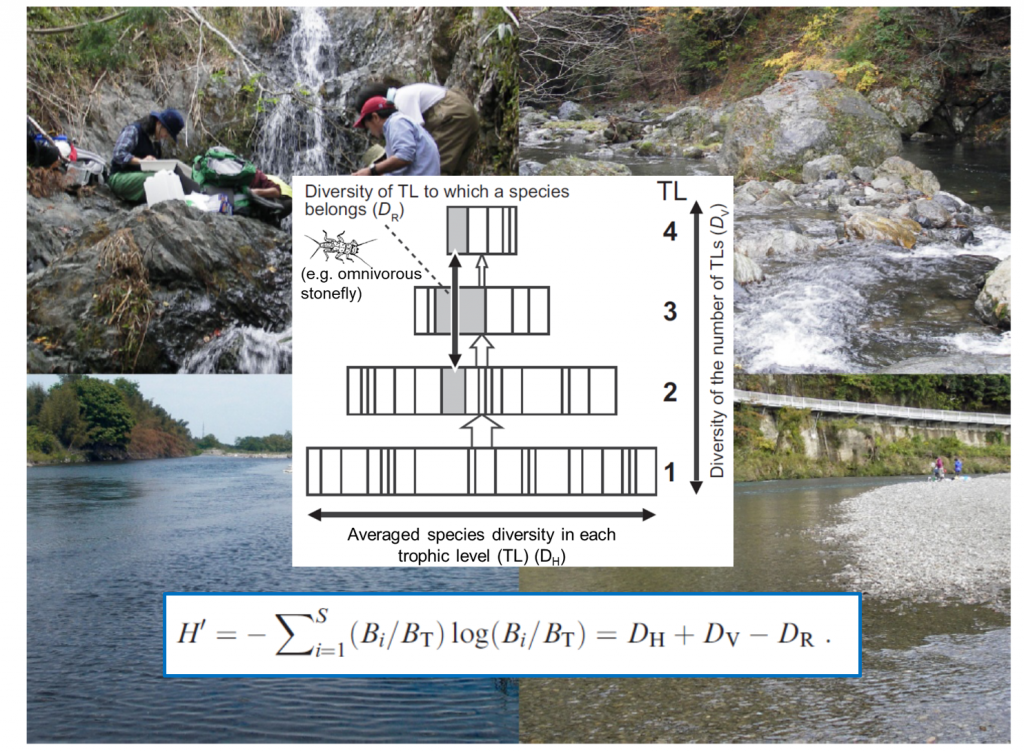D indices: novel biodiversity indices to disentangle food web complexity through network unfolding theory
The research project in Japan lead by the scientists in Research Institute for Humanity and Nature, Ryukoku University, and Tohoku University, together with Professor Takeshi Miki from the Institute of Oceanography, proposed novel biodiversity indices (D indices) to quantify food web complexity and proved their effectiveness to distinguish the different ecosystem and food web status between diverse river environments. The achievement of this study has been online published in Ecology Letters, the top journal in ecological sciences.
Biodiversity is the basis for various ecosystem functions and services. Species in nature are linked each other by prey-predator relationship and forms a complex network of interactions, called food web. The Shannon’s entropy (or Shannon’s diversity index), based on information theory, has been used as the most common index for quantifying the magnitude of biodiversity. However, the relationship between Shannon’s diversity index and food web network structure remains unclear. This study developed the new indices of biodiversity that can evaluate multifaceted characteristics of food web complexity and proved the linkage with the Shannon’s diversity index (the equation in Figure 1). Then, through combining stable isotope analysis and network unfolding theory, this study demonstrated the applicability of the new indices for quantitatively detecting the different levels of natural food webs complexity. Since the D indices equation is able to untangling the overall diversity (Shannon’s diversity) into distinct components of network-structure-related diversities, it is expected that the method developed in this study will be applicable to fishery management and conservation of ecosystems such as coral reefs through sensing the unfavorable shifts of food web complexity.
Reference:
“Using food network unfolding to evaluate food-web complexity in terms of biodiversity: theory and applications”
Yoshikazu Kato*, Michio Kondoh, Naoto F Ishikawa, Hiroyuki Togashi, Yukihiro Kohmatsu, Mayumi Yoshimura, Chikage Yoshimizu, Takashi F Haraguchi, Yutaka Osada, Nobuhito Ohte, Naoko Tokuchi, Noboru Okuda, Takeshi Miki and Ichiro Tayasu. Ecology Letters (2018) doi: 10.1111/ele.12973
For More details (in Japanese)
http://www.chikyu.ac.jp/publicity/news/2018/0518.html
Figure 1. Diverse aquatic environments with different human impacts and forest history in Japan (background photos). Network unfolding and the decomposition of Shannon’s diversity index (H’) into three D indices: horizontal (DH), vertical (DV) and range (DR) diversities (front diagram & equation).











